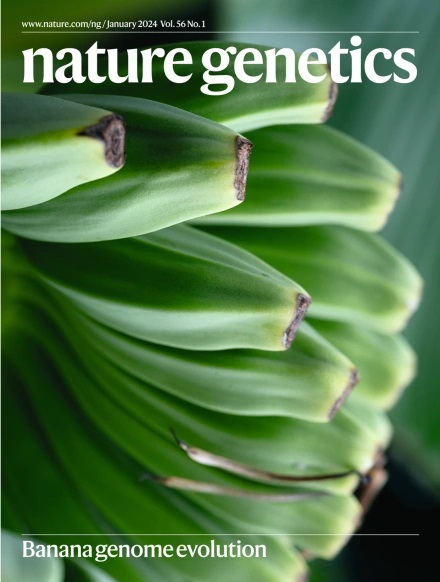胶质母细胞瘤生态系统的多层转录结构
IF 31.7
1区 生物学
Q1 GENETICS & HEREDITY
引用次数: 0
摘要
在异柠檬酸脱氢酶野生型胶质母细胞瘤(GBM)中,肿瘤间和肿瘤内的细胞异质性可能驱动治疗耐药性。在这里,我们分析了来自59例患者的121例原发性和复发性GBM样本,使用单核RNA测序和整体肿瘤DNA测序来表征GBM的转录异质性。首先,GBMs可以根据其广泛的细胞组成进行分类,包括恶性和非恶性细胞类型。其次,在每种细胞类型中,我们描述了细胞状态的多样性及其通路激活,特别是恶性细胞状态的扩展集,包括胶质祖细胞样,神经元样和纤毛样。第三,GBMs之间的剩余差异突出了三个基线基因表达程序。这三层异质性相互关联,并与特定的遗传畸变部分相关,从而定义了三种刻板的GBM生态系统。这项工作为GBM的多层转录结构提供了无与伦比的视角。这种结构在疾病进展过程中是如何演变的,Spitzer等人在合著的论文中对此进行了阐述。本文章由计算机程序翻译,如有差异,请以英文原文为准。

The multilayered transcriptional architecture of glioblastoma ecosystems
In isocitrate dehydrogenase wildtype glioblastoma (GBM), cellular heterogeneity across and within tumors may drive therapeutic resistance. Here we analyzed 121 primary and recurrent GBM samples from 59 patients using single-nucleus RNA sequencing and bulk tumor DNA sequencing to characterize GBM transcriptional heterogeneity. First, GBMs can be classified by their broad cellular composition, encompassing malignant and nonmalignant cell types. Second, in each cell type we describe the diversity of cellular states and their pathway activation, particularly an expanded set of malignant cell states, including glial progenitor cell-like, neuronal-like and cilia-like. Third, the remaining variation between GBMs highlights three baseline gene expression programs. These three layers of heterogeneity are interrelated and partially associated with specific genetic aberrations, thereby defining three stereotypic GBM ecosystems. This work provides an unparalleled view of the multilayered transcriptional architecture of GBM. How this architecture evolves during disease progression is addressed in the companion manuscript by Spitzer et al. Integrated single-cell transcriptomic and genetic characterization of 121 adult glioblastomas identifies heterogeneity at cell type, cell state and baseline expression program levels associated with specific mutations that form three stereotypical ecosystems.
求助全文
通过发布文献求助,成功后即可免费获取论文全文。
去求助
来源期刊

Nature genetics
生物-遗传学
CiteScore
43.00
自引率
2.60%
发文量
241
审稿时长
3 months
期刊介绍:
Nature Genetics publishes the very highest quality research in genetics. It encompasses genetic and functional genomic studies on human and plant traits and on other model organisms. Current emphasis is on the genetic basis for common and complex diseases and on the functional mechanism, architecture and evolution of gene networks, studied by experimental perturbation.
Integrative genetic topics comprise, but are not limited to:
-Genes in the pathology of human disease
-Molecular analysis of simple and complex genetic traits
-Cancer genetics
-Agricultural genomics
-Developmental genetics
-Regulatory variation in gene expression
-Strategies and technologies for extracting function from genomic data
-Pharmacological genomics
-Genome evolution
 求助内容:
求助内容: 应助结果提醒方式:
应助结果提醒方式:


